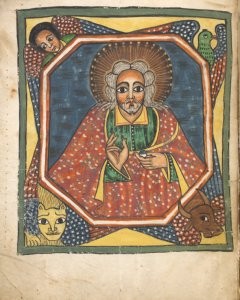 In Egypt in 1948 a remarkable discovery was made: a collection of ancient documents now known as the Nag Hammadi Library. These writings were the work of a group of Christian heretics called the Gnostics. Most of these documents date from the 2nd-4th centuries. The best known of the Gnostic writings is The Gospel of Thomas.
In Egypt in 1948 a remarkable discovery was made: a collection of ancient documents now known as the Nag Hammadi Library. These writings were the work of a group of Christian heretics called the Gnostics. Most of these documents date from the 2nd-4th centuries. The best known of the Gnostic writings is The Gospel of Thomas.
Thomas isn’t a gospel in the same form as the gospels that you know. There is no birth narrative (or even a passion narrative!). In fact, there really aren’t any narratives at all. Thomas is a collection of the sayings of Jesus. Truthfully, Thomas doesn’t provide us with any unique sayings of Jesus at all (for the book dates from long after the time of Jesus and the canonical gospels). More accurately the book contains a series of sayings attributed to Jesus by Gnostic teachers who were using the trappings of Christianity to convey their own (very strange) teaching.
The book begins, “These are the secret sayings which the living Jesus spoke and which Didymos Judas Thomas wrote down.” And in those first words we see the hallmarks of much that characterizes Gnosticism. These are “secret sayings” – the gnosis, the secret handshake, that will get the insider into heaven.
Some of these 114 sayings are clearly just paraphrases of passages from the canonical gospels, such as:
Saying 24: His disciples said to him, “Show us the place where you are, since it is necessary for us to seek it.” He said to them, “Whoever has ears to hear, let him hear. There is light within a man of light, and he lights up the whole world. If he does not shine, he is darkness.”
This is a recognizable mangling of Jesus light of the world teaching (John 8-9; Matt 5:14) as well as the question concerning where his is going (John 14:4-5). Of course, it is loosely paraphrased and rather confusingly jumbled. This is typical of Thomas. A great many of the Thomas sayings fit into this jumbling/mangling category. Here is another:
Saying 62: “It is those who are worthy of my mysteries that I tell my mysteries. Do not let your left hand know what your right hand is doing.”
This is a paraphrase of a saying from the canonical gospels (Matt 6:3), but injecting it with Gnostic theology. Again, only those who are “in,” the gnostikoi, are worthy of “the mysteries.” This is typical Gnostic secret handshake stuff.
Other sayings are unique to Thomas, and are just plain puzzling:
Saying 7: Jesus said, “Blessed is the lion which becomes man when consumed by man; and cursed is the man whom the lion consumes, and the lion becomes man.”
So, I guess, try not to get eaten by a lion? Or this one:
Saying 22: Jesus saw infants being suckled. He said to his disciples, “These infants being suckled are like those who enter the kingdom.” They said to him, “Shall we then, as children, enter the kingdom?” Jesus said to them, “When you make the two one, and when you make the inside like the outside and the outside like the inside, and the above like the below, and when you make the male and the female one and the same, so that the male not be male nor the female female; and when you fashion eyes in place of an eye, and a hand in place of a hand, and a foot in place of a foot, and a likeness in place of a likeness; then you will enter the kingdom.”
This is drawing on Jesus’ references to the little children and his call for the disciples to become like little children to enter the kingdom (Matt 18:3). However, it has been astonishingly confused by injecting it with a whole bunch of Gnostic silliness meant to demean physical realities, particularly the distinctions of the male and female body (remember: for Gnostics, bodies (and body parts!) are bad).
Saying 114: Simon Peter said to them, “Let Mary leave us, for women are not worthy of life.” Jesus said, “I myself shall lead her in order to make her male, so that she too may become a living spirit resembling you males. For every woman who will make herself male will enter the kingdom of heaven.”
This saying is so strikingly at odds with anything the canonical Jesus would ever say that it well illustrates that however much of the language of Jesus did find its way into Thomas, this book reflects a worldview and theology utterly at odds with the actual Jesus.
Of what value is The Gospel of Thomas for learning about Jesus? None whatsoever. It is sometimes funny, though, without meaning to be.
So, why are so many people talking about Thomas and its importance? If it is late and it reveals nothing of the historical Jesus, why are people acting as though it should be added to the scriptures alongside the canonical gospels? That’s easy. They aren’t trying to elevate Thomas because Thomas is wonderful; they are trying to elevate Thomas in order to diminish the message and authority of the canonical gospels and the Jesus they present. Don’t be fooled.